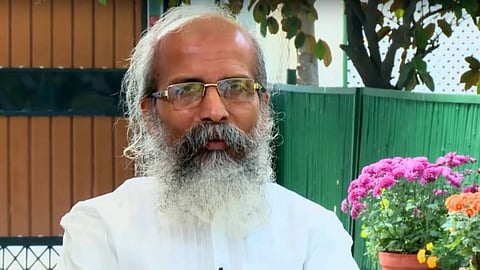"COVID-19 gives us opportunities to learn"
Pratap Chandra Sarangi, Union Minister of State for Animal Husbandry, Dairying and Fisheries; speaks about the steps taken by the Union government to help the fisheries sector and boost seafood exports from India
Q How is your ministry planning to help these businesses overcome economic challenges and boost the fishing industry?
A As far as India’s seafood exports are concerned, the major constituent of the export basket is cultured and captured shrimp (about 65-70 per cent). Since the entire specific pathogen-free broodstock for shrimp seed production comes from overseas; the government of India has intervened to mitigate the impact of COVID-19 by announcing various favourable relief measures. Also, we have relaxed the uniform fishing ban from 61 days to 47 days this year considering fishing activities have already been restricted during the first 16 days of lockdown.
As far as seafood exports are concerned the Department of Fisheries and the Department of Commerce are closely working towards a common goal of enhancing the export range.
Q How do these departments plan to bolster Indian seafood exports?
A Our seafood processors and exporters need an adequate quantity of quality fish at affordable prices, free of residues, governmental support in ease of doing business, addressing the sanitary and phytosanitary issues impacting trade, marketing linkages, etc. At the same time, we have to ensure that our fishermen and aqua farmers get higher returns for their fish. The Department of Fisheries primarily addresses issues concerning fish production and productivity, infrastructure, quality and standards, phytosanitary issues and regulatory framework. MPEDA under the Department of Commerce is exploring new international markets, deepening markets and brand promotion.
Q How will Pradhan Mantri Matsya Sampada Yojana (PMMSY) help the sector?
A PMMSY plans to add an additional fish production of 70 lakh metric tonnes by 2024-25, enhance aquaculture productivity from the present national average of three tonnes to five tonnes per hectare, reduce post-harvest losses from the reported 20-25 per cent to around 10 per cent and generate about 5.5 million direct and indirect employment opportunities in the fisheries sector along with strengthening and modernisation of the supply and value chain. In fact, enhancing exports from Rs46,589 crore (2018-19) to Rs1 lakh crore by 2024-25 is one of the key targets of the PMMSY scheme. There are also several activities to address issues impacting the competitiveness of our
seafood exports.
Q What are the major hurdles and steps identified by your ministry to boost growth of the seafood industry?
A Doubling seafood exports to Rs1 lakh crore by 2024-25; planning and strategising to achieve ambitious targets like 4-5 fold increase in fisheries exports in the next 8-10 years is one of the key goals. Currently we are too dependent on one single shrimp species viz L. Vannamei. We are working towards the diversification of candidate species for aquaculture. Thus, about Rs3,300 crore investments will be made under the PMMSY for aquaculture development with special emphasis on export species.
Also, Rs3,500 crore will be invested in fishing harbours and fish landing centres under PMMSY. We will dovetail the development of fishing harbours with Sagarmala scheme of the ministry of shipping to further increase investments. Investments to the tune of Rs1,400 crore will also be made in the post-harvest and cold chain.
Q What steps will your ministry take to influence Indian seafood industry entrepreneurs with the PM’s of ‘Atmanirbhar Bharat’?
A While COVID-19 poses challenges to our seafood sector, it also gives us opportunities to learn and correct course. In the next few months we will be working closely with stakeholders to develop strategies towards strengthening the sector to develop resilience to any such future shocks. In line with ‘Atmanirbhar Bharat’, we will focus on strengthening and deepening domestic markets with special attention to improved urban marketing to ensure a seamless supply of quality and varied products to domestic consumers as well as higher returns to entrepreneurs, fishers and aqua farmers.
The government of India is also working on a World Bank scheme which would focus on domestic marketing, especially urban markets, branding and advocacy, entrepreneur models, traceability, standard, certification, branding, etc. Increased production of value-added products would thus be a priority. Cooperatives, self help groups and fish farmers producer organisations will be encouraged all along the value chain across the country to increase the bargaining power of fishers and fish farmers.
I am extremely confident that the situation will normalise soon and our seafood industry will certainly tide over the impact of COVID-19.

